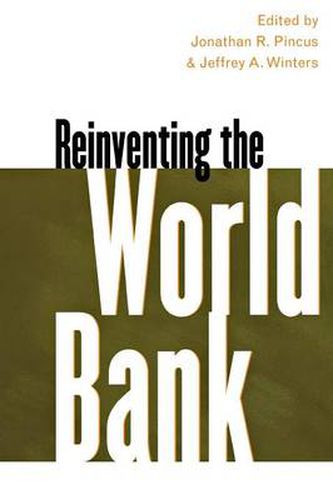Readings Newsletter
Become a Readings Member to make your shopping experience even easier.
Sign in or sign up for free!
You’re not far away from qualifying for FREE standard shipping within Australia
You’ve qualified for FREE standard shipping within Australia
The cart is loading…






Largely ignored for decades, the World Bank increasingly finds itself at the centre of an international political maelstrom. Attacked by the Right as the last bastion of socialism and by the Left as an instrument of economic imperialism, the Bank has struggled to adapt to a changing post-Cold War era. Still the world’s leading development institution in terms of size and influence, the International Bank for Reconstruction and Development’s failure to articulate and implement a convincing strategy to reduce world poverty has left it vulnerable to the charge that, at least in its present form, it has outlived its usefulness. In a book neither funded nor controlled by its subject, North American and British scholars critically examine the World Bank. They contend that an institution that has grown to unmanageable proportions through internally driven change cannot realistically be expected to effect its own reform programme. All the Bank’s previous attempts at self-redesign have failed, and the contributors argue it is beyond reform; it must be reinvented. Reinvention involves a thoroughgoing and externally controlled process of transformation, starting from basic principles and encompassing three closely related dimensions: operations, or the fit between the Bank’s lending programme and its development objectives; concepts, its vision of development and anti-poverty strategy; and power, which includes the Bank’s relationships with member countries and the wider public, as well as structures of internal governance and accountability.
$9.00 standard shipping within Australia
FREE standard shipping within Australia for orders over $100.00
Express & International shipping calculated at checkout
Largely ignored for decades, the World Bank increasingly finds itself at the centre of an international political maelstrom. Attacked by the Right as the last bastion of socialism and by the Left as an instrument of economic imperialism, the Bank has struggled to adapt to a changing post-Cold War era. Still the world’s leading development institution in terms of size and influence, the International Bank for Reconstruction and Development’s failure to articulate and implement a convincing strategy to reduce world poverty has left it vulnerable to the charge that, at least in its present form, it has outlived its usefulness. In a book neither funded nor controlled by its subject, North American and British scholars critically examine the World Bank. They contend that an institution that has grown to unmanageable proportions through internally driven change cannot realistically be expected to effect its own reform programme. All the Bank’s previous attempts at self-redesign have failed, and the contributors argue it is beyond reform; it must be reinvented. Reinvention involves a thoroughgoing and externally controlled process of transformation, starting from basic principles and encompassing three closely related dimensions: operations, or the fit between the Bank’s lending programme and its development objectives; concepts, its vision of development and anti-poverty strategy; and power, which includes the Bank’s relationships with member countries and the wider public, as well as structures of internal governance and accountability.